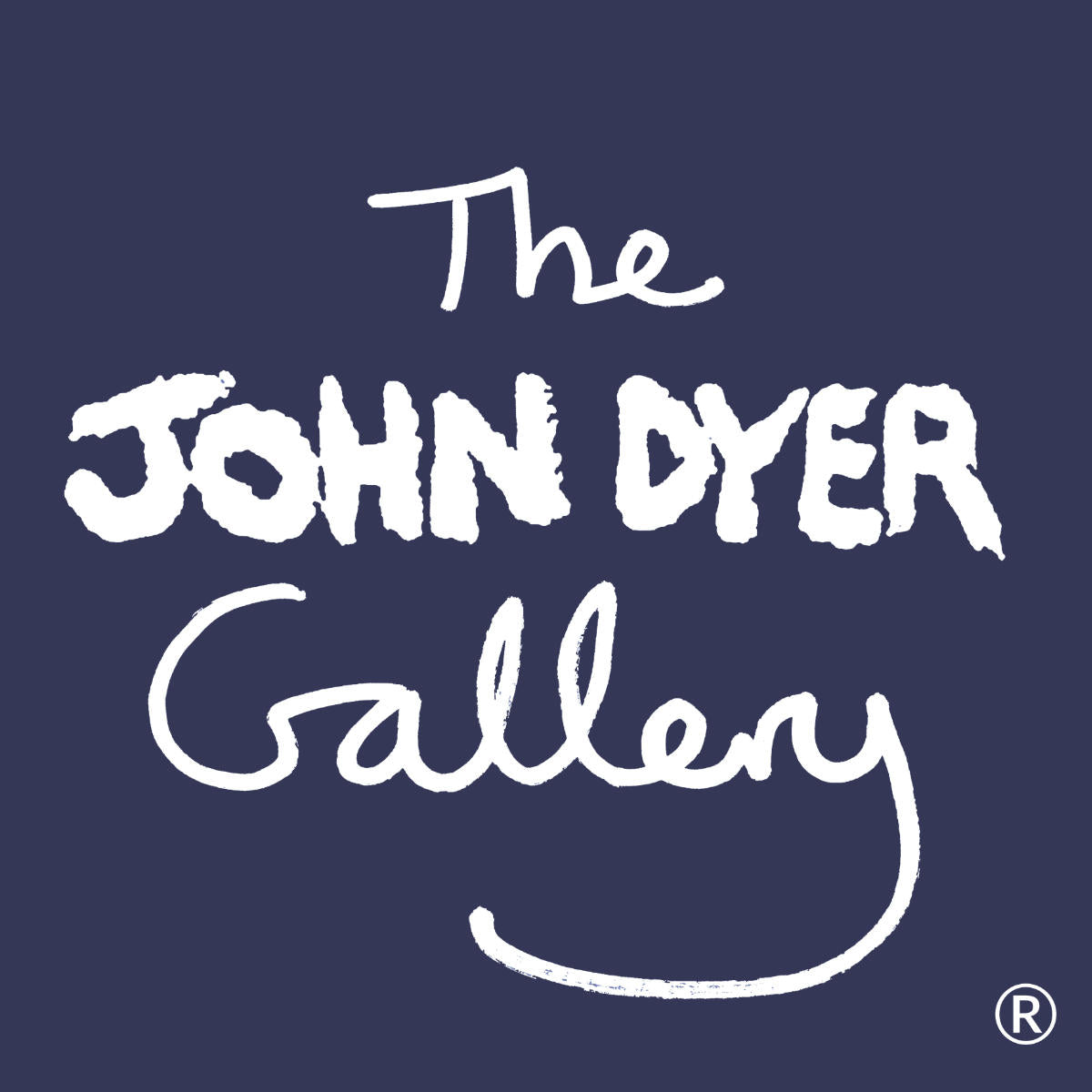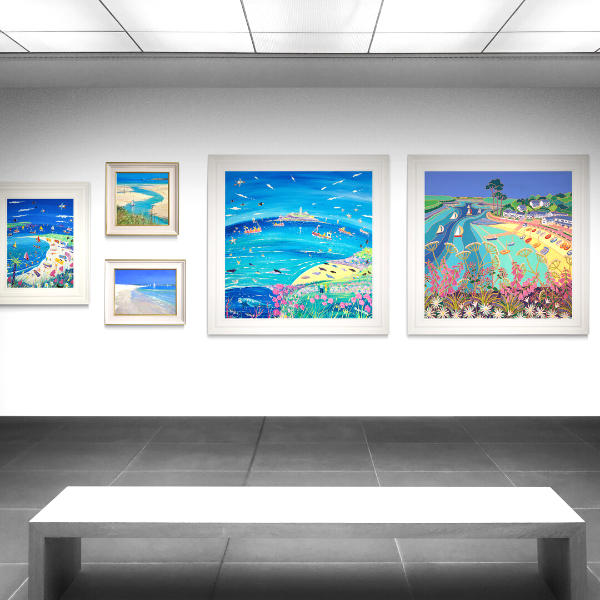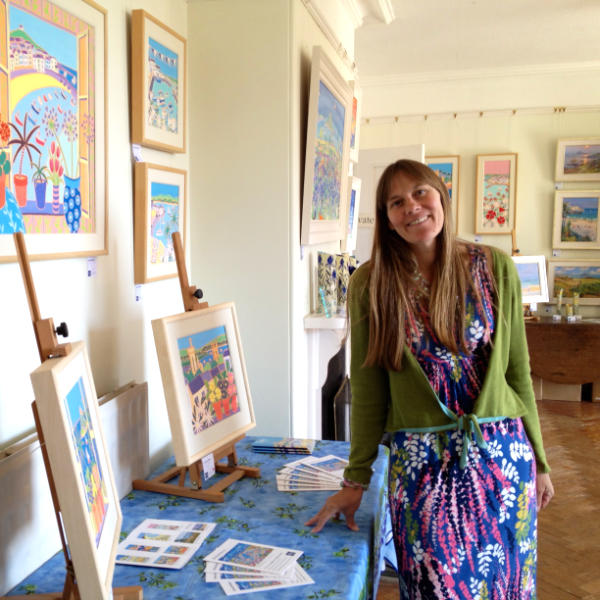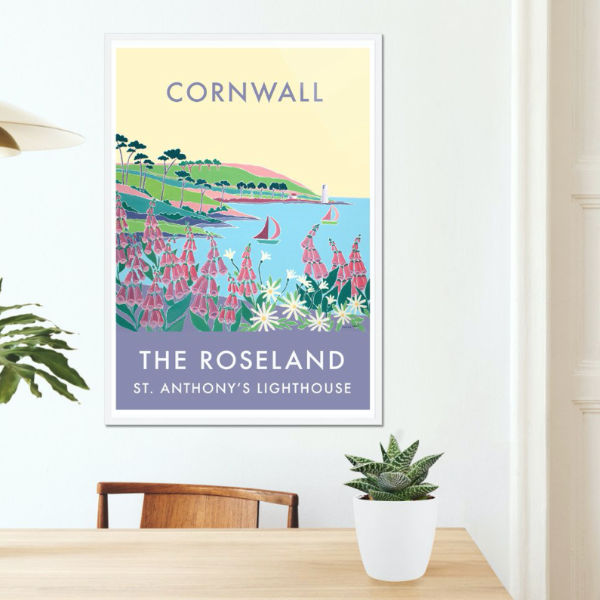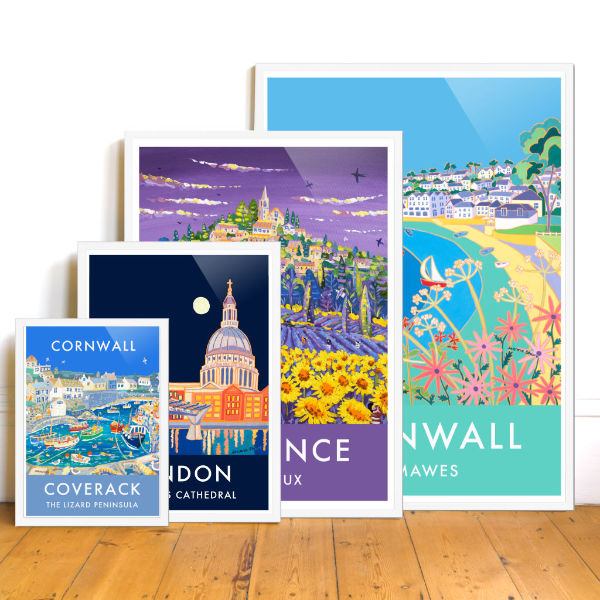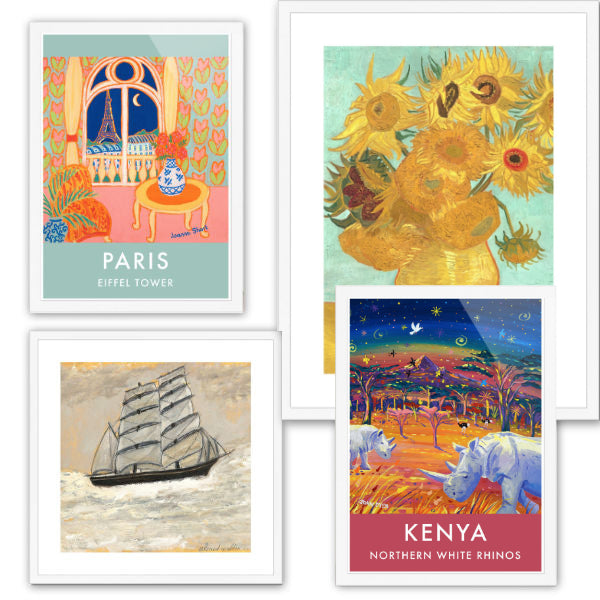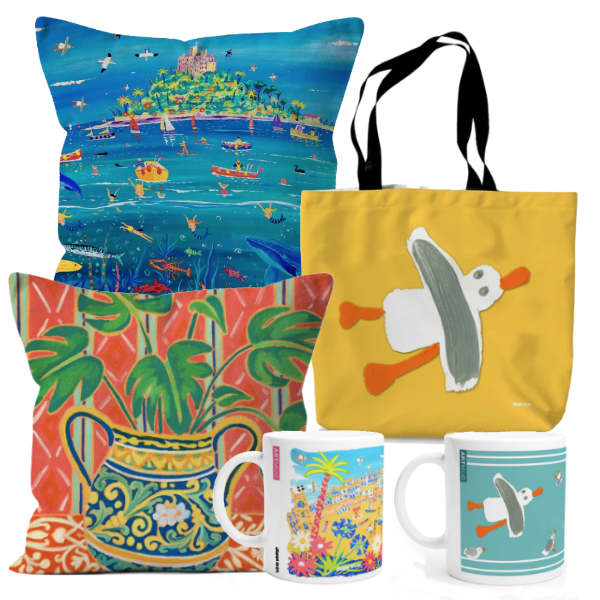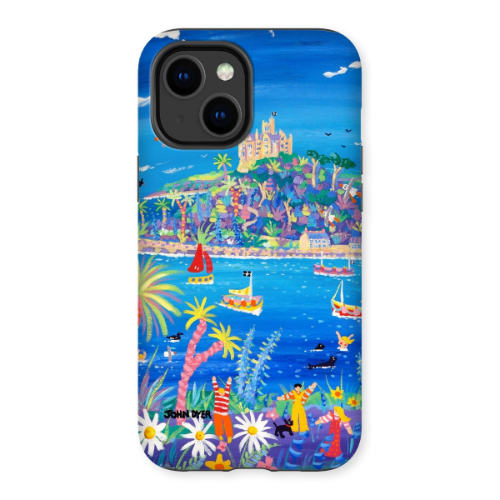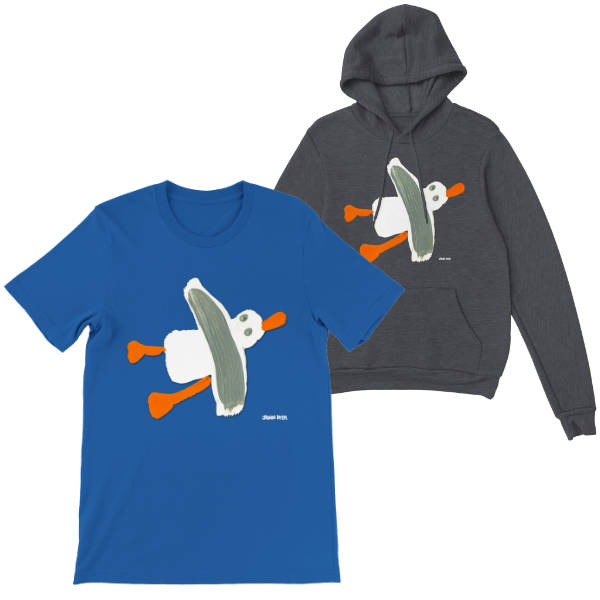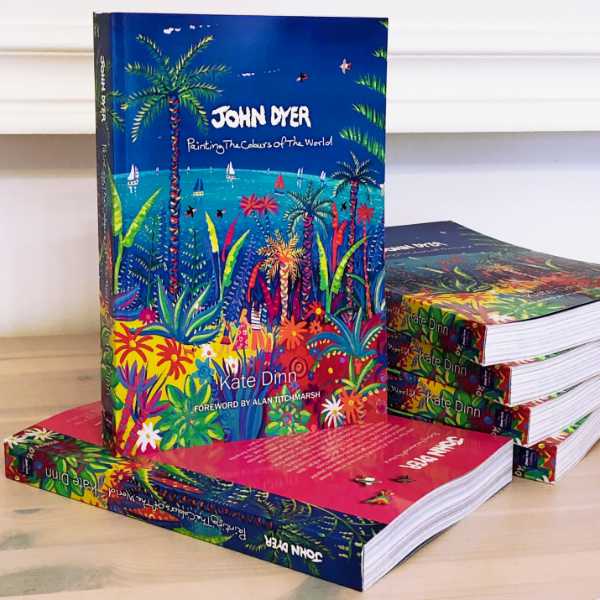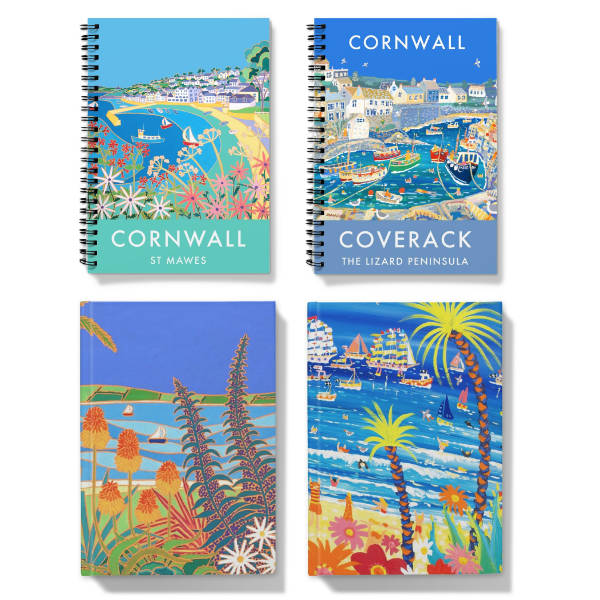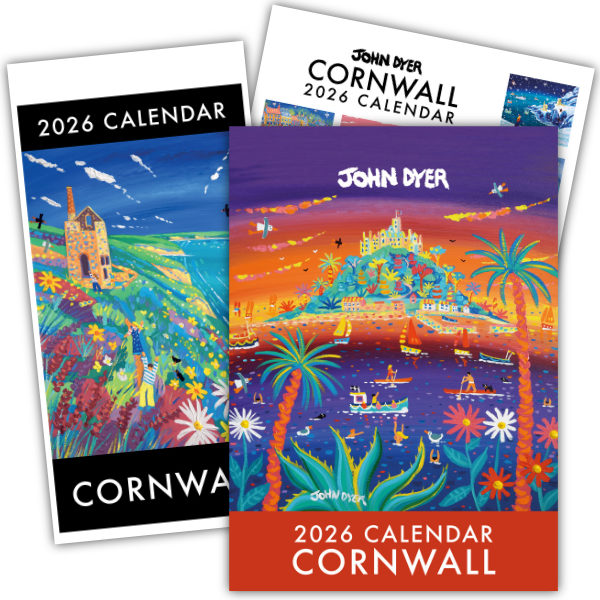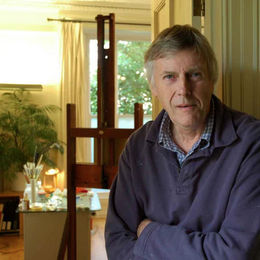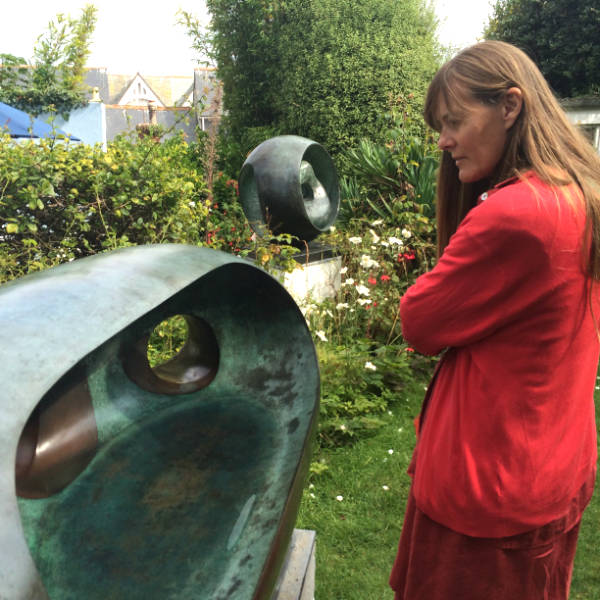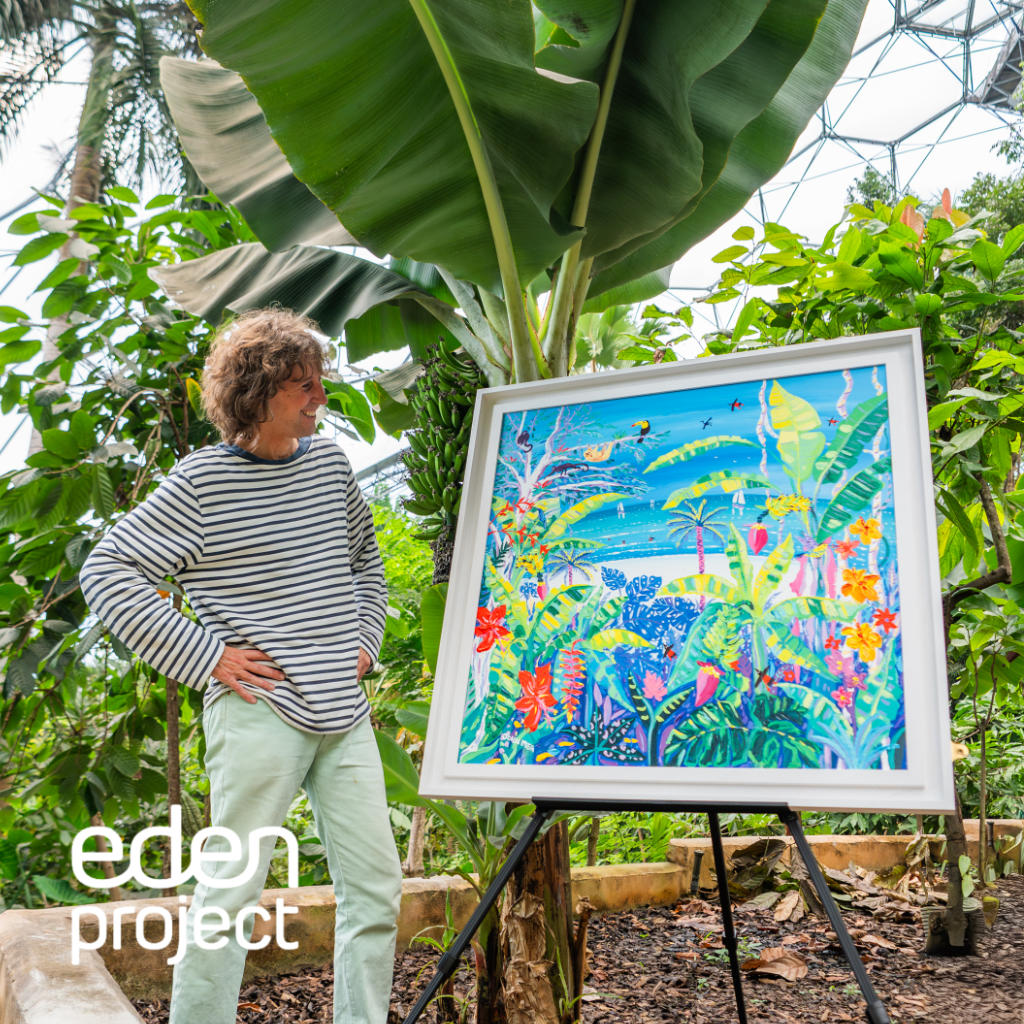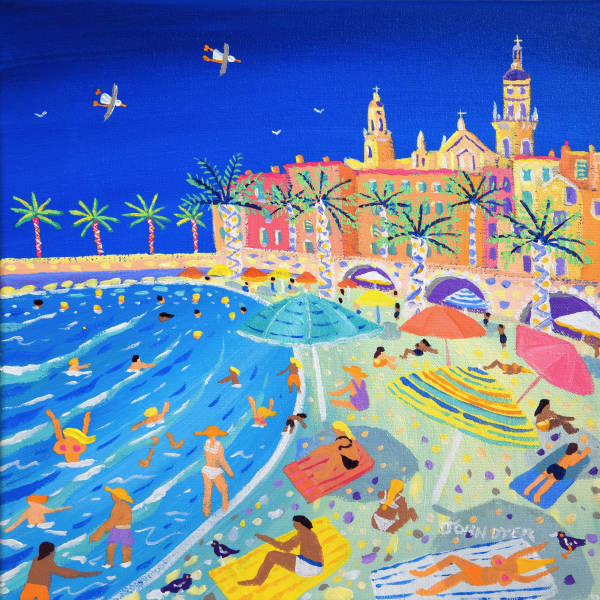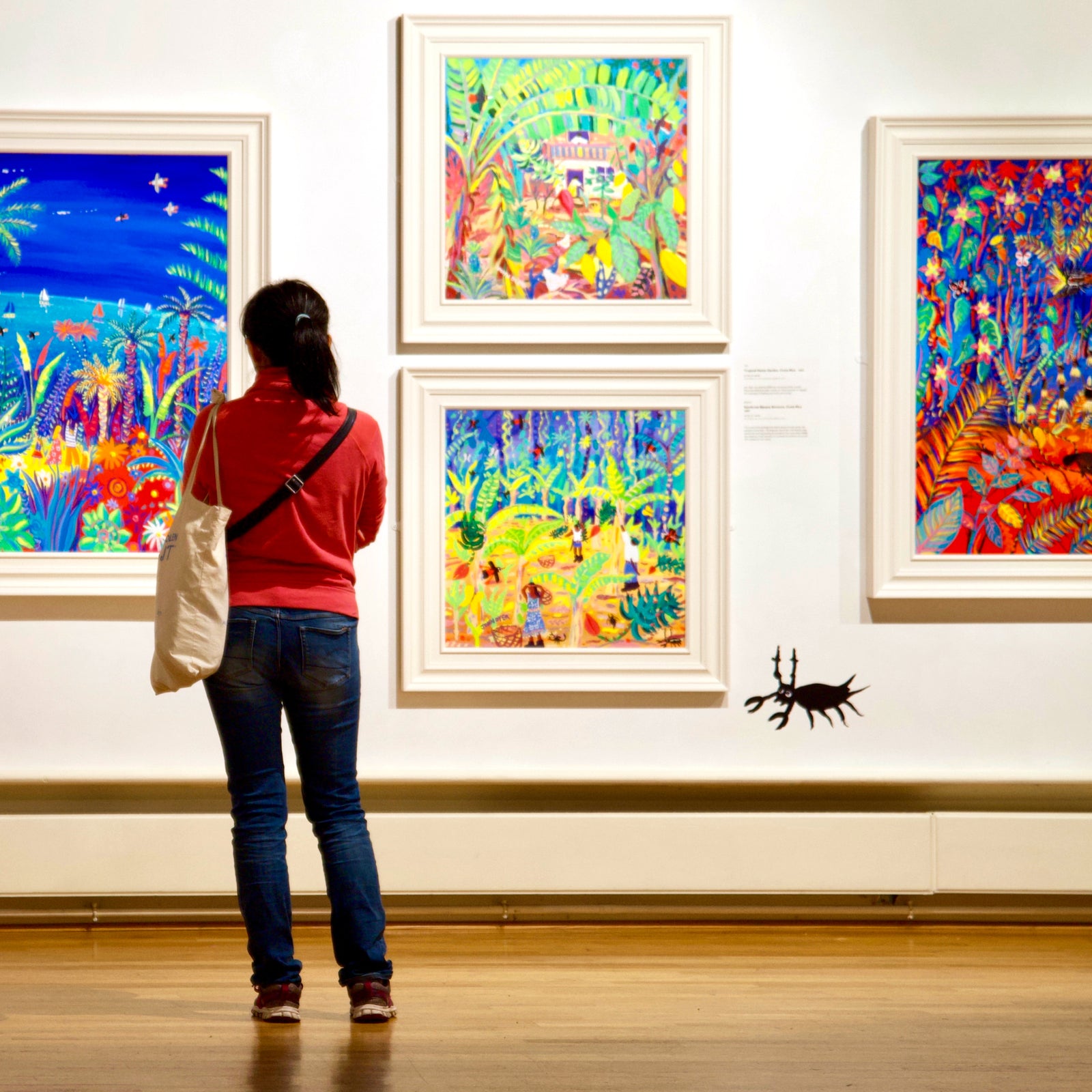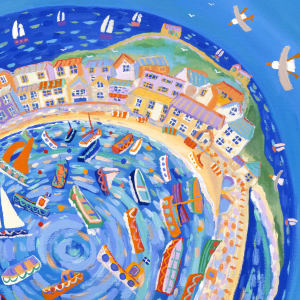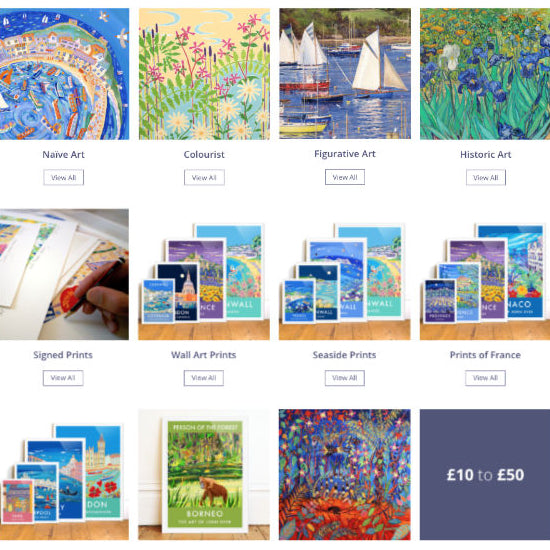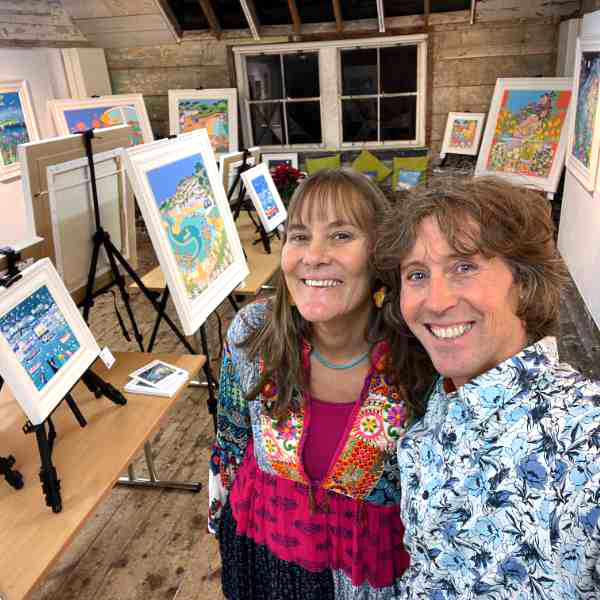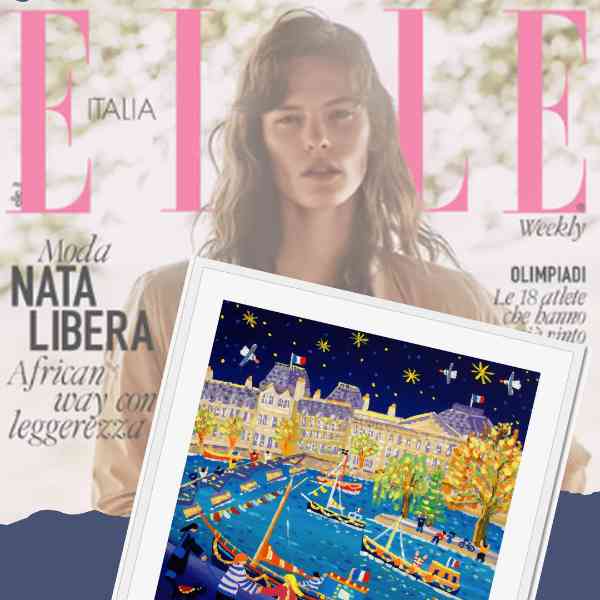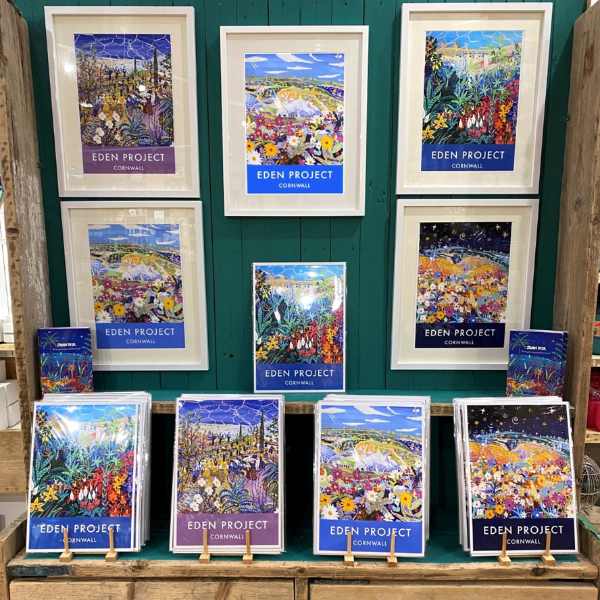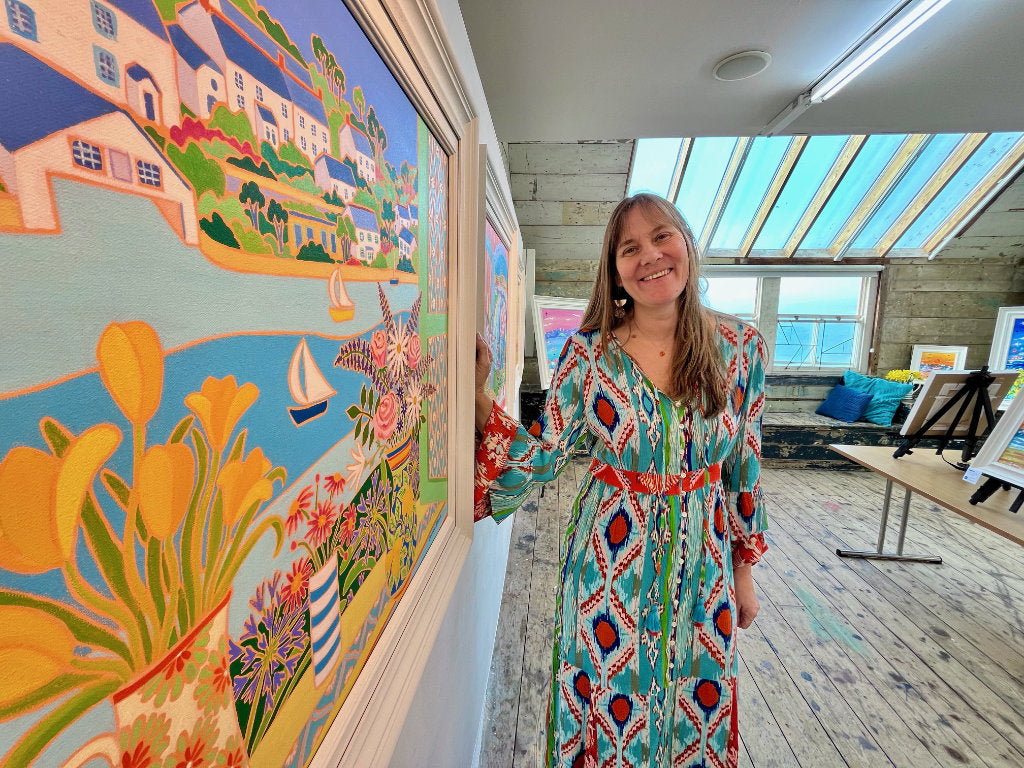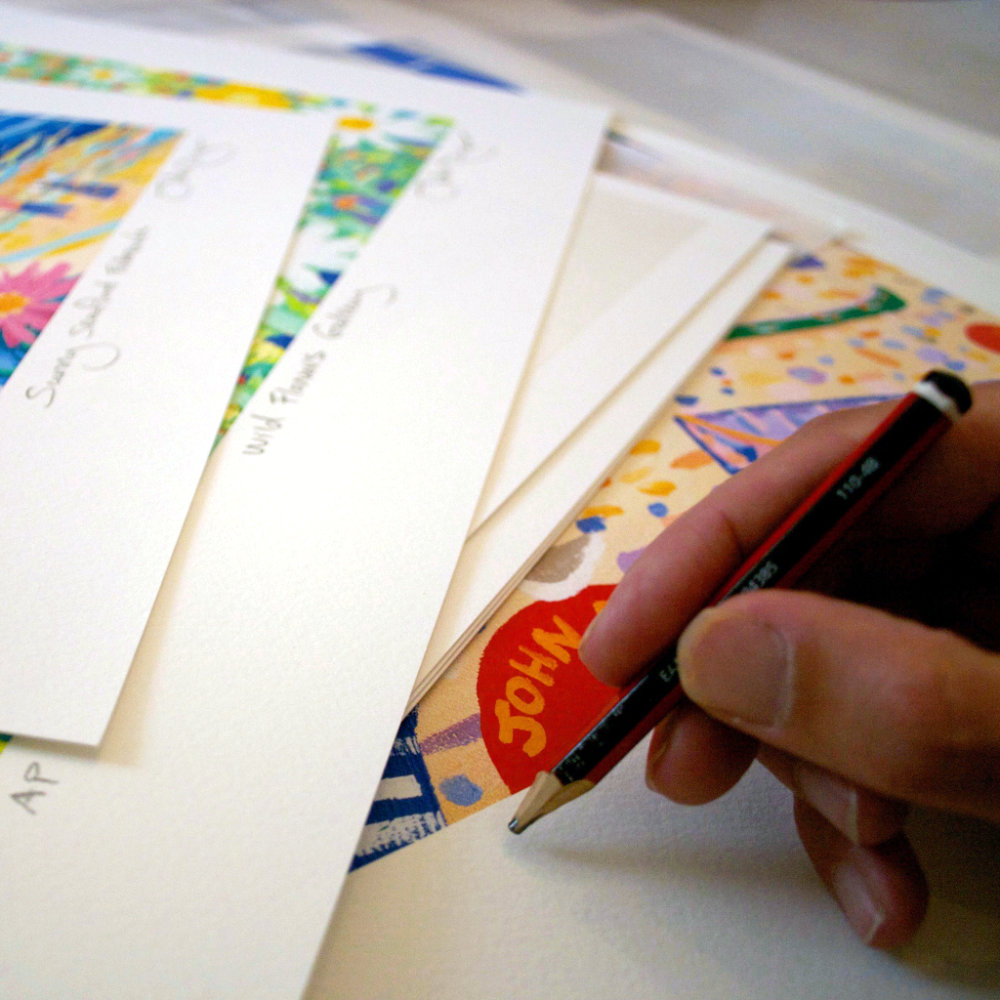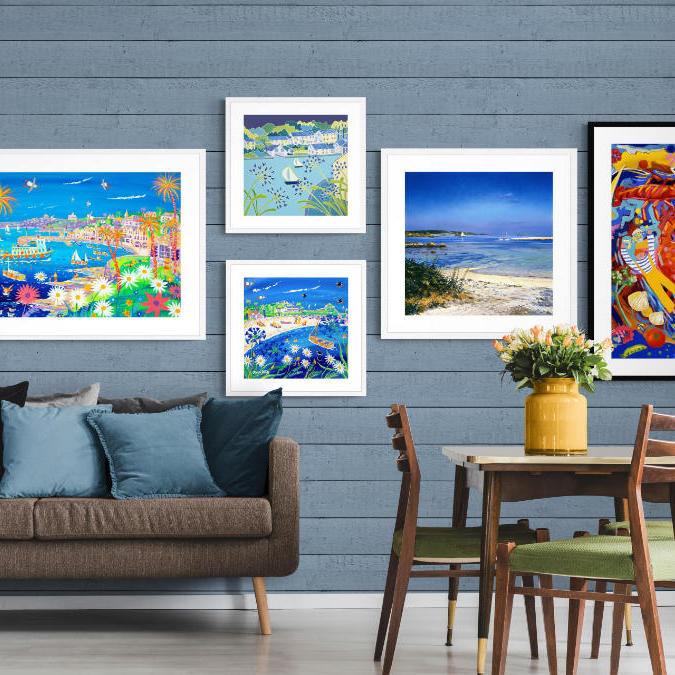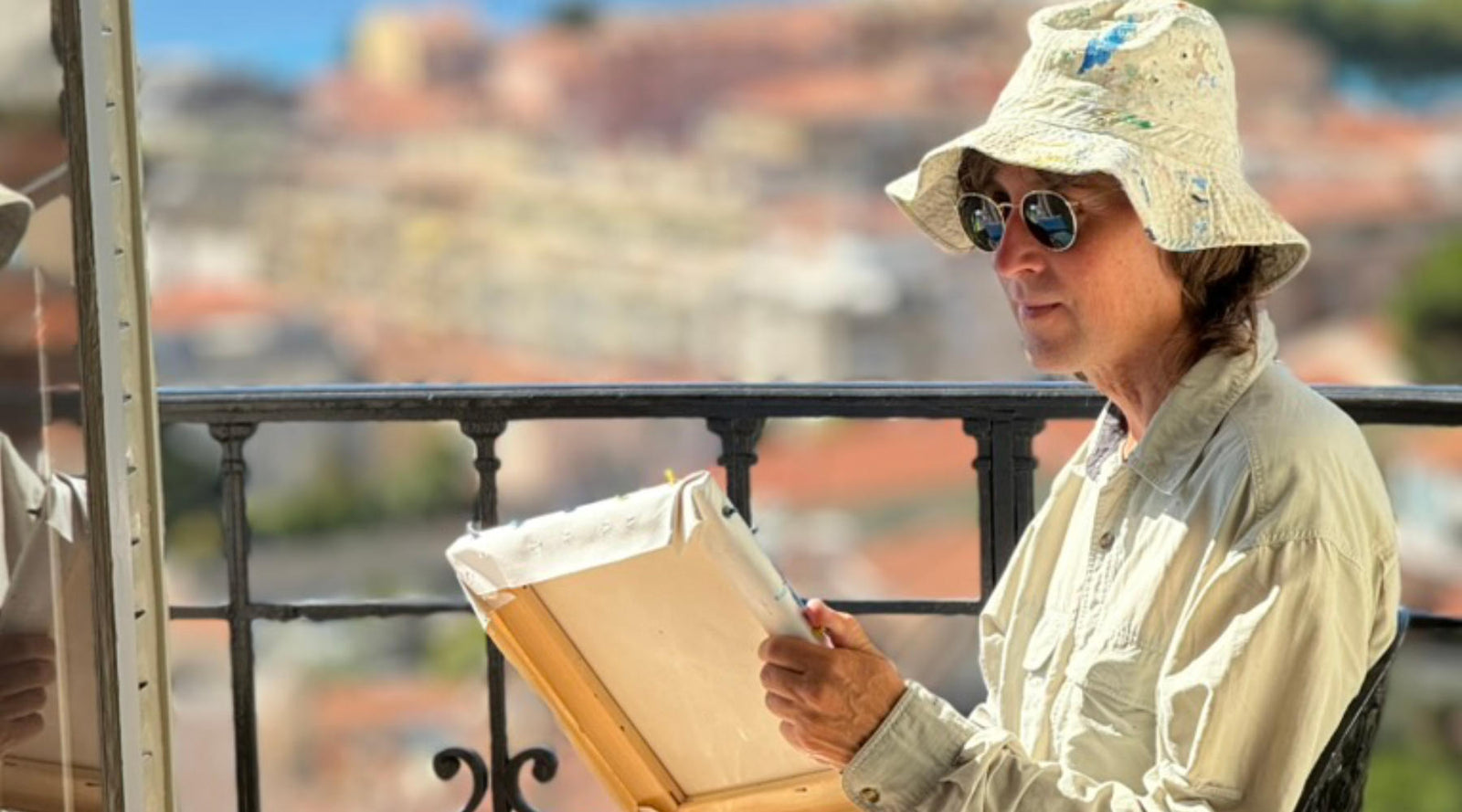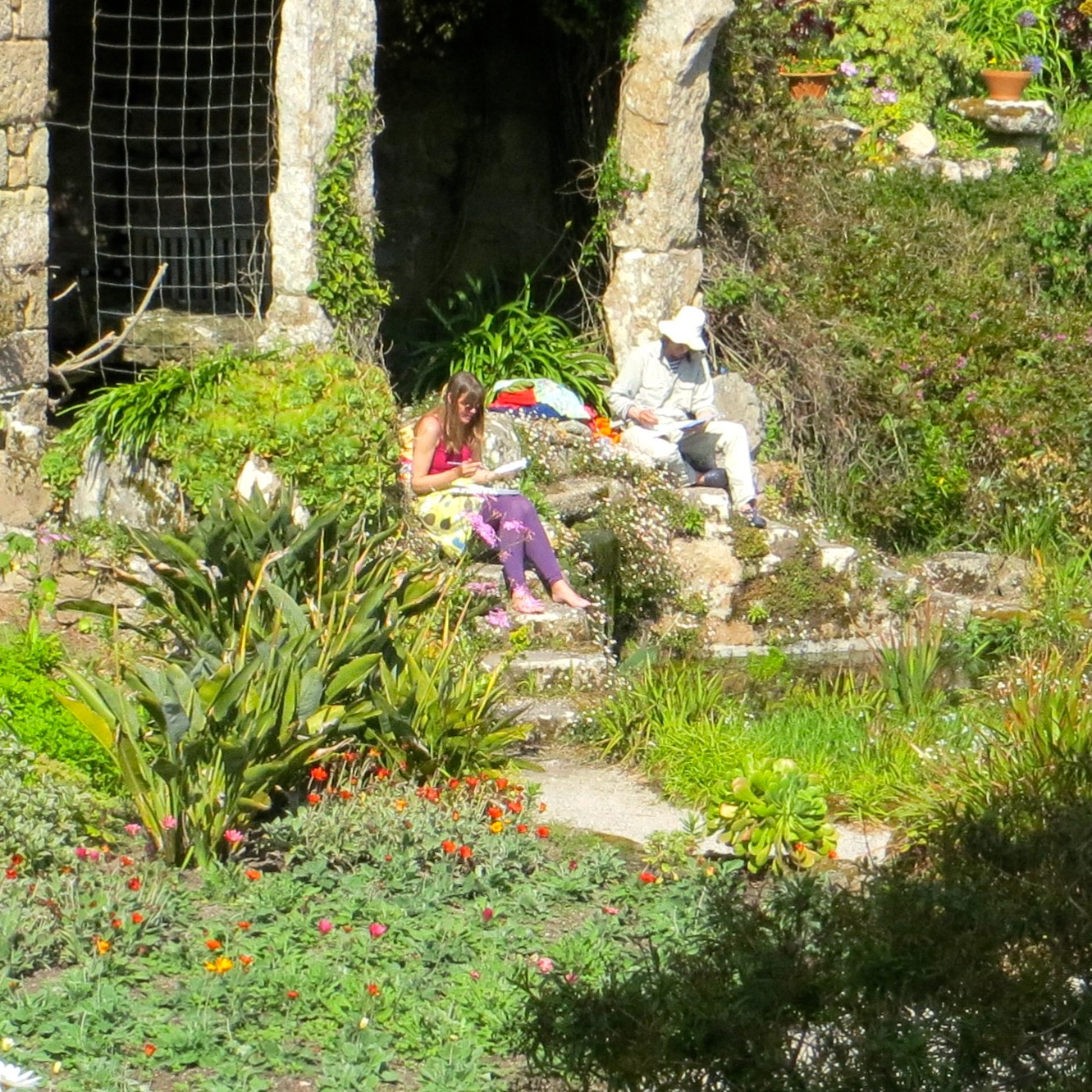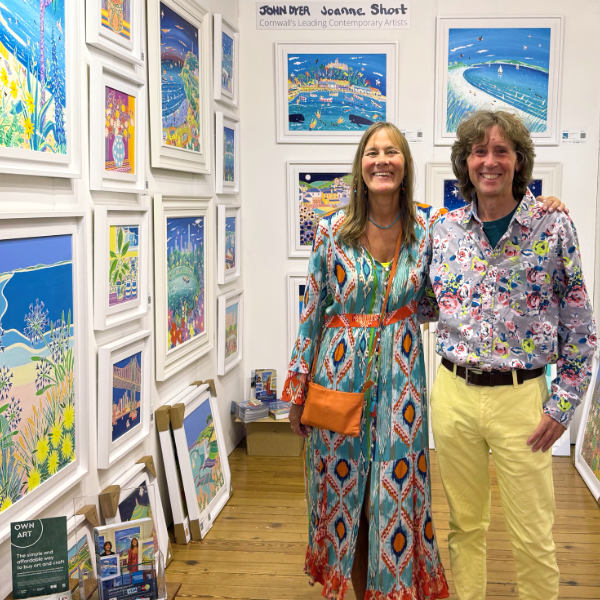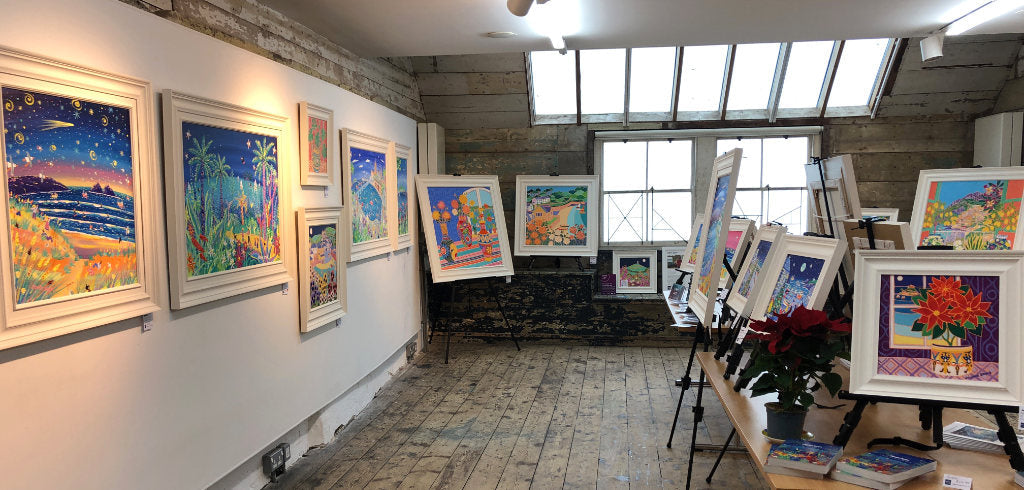
Above: An exhibition of original paintings by John Dyer and Joanne Short at the Porthmeor Studios in St Ives.
Art is often seen as an investment, and it is in so many ways, so we thought we would go through the ways art is an investment and what to look for when buying signed prints and original paintings.
Just like the stock market, investing and owning art is not limited to the wealthy elite, as there are many companies with shares available at affordable prices and a lot of affordable art is available too, making it accessible for anyone looking to invest in art.
As a general guide, we recommend looking for art that you love and want to own for a lifetime. Understanding art history can enhance the appreciation and value of the art you invest in. Art is an investment in your life, the enjoyment of your home or office and your relaxation, so those are the guaranteed returns that art can provide in abundance.
Just like stocks and shares you shouldn’t expect a guaranteed up and to the right rise in value of any art you own.
Art certainly does deserve a place in a varied portfolio of investment assets alongside property, bonds, savings and stocks and shares. Unless a physical disaster strikes or theft, the artwork is very unlikely to go to zero value, as a company might if it ceases trading, but it is also very unlikely to hit a home run like Apple, Netflix, Starbucks or Tesla investments or a stock market tracker fund.
One of the benchmarks for art values is Art Market Research which takes data from all the major auction houses, but this index doesn’t track data from private galleries, and it can be many decades before contemporary artists start to have work being sold at auction, so unless you are investing in very established historic artists, and often deceased artists, it isn’t very useful. If you are buying lots of art in the hope that one or some of the pieces will be the next Banksy, Hirst or Hockney then your risks are high as many original pieces of art will inevitably have to be enjoyed just for their decorative qualities as it is almost random which artists go on to gain large future price rises and often big business gets to decide that by bulk buying, hoarding and then releasing years later.
How to choose artists to invest in
Above: Investable artists Joanne Short and John Dyer seen in the St Ives Society of Artists Crypt Gallery in Cornwall.
So you have decided to buy some art to enjoy in your home or office, and if you are not worried about an investment thesis, then simply buy what you like.
If you invest £5000 in a painting that you don’t like, just because you expect its value to rise, then you have missed out on the main benefit of owning art over other assets. You should LOVE the art you buy, and it should radiate positive energy to you as it will benefit you every day.
If you want to have a better chance of the art appreciating or maintaining its value over time there are a few things you might want to consider.
How to choose artworks to invest in
-
Buy art that makes you happy. If it makes you happy, other people will love it, too, and that adds to its value.
-
Choose artists that already have their art in the permanent collections of well-known galleries and institutions. ArtUK.org lists many artists whose work is part of the UK’s public collection. This list is only updated every few years, so it isn’t definitive and most artists should be able to advise if their art is already in a public collection. Artists John Dyer, Joanne Short and Ted Dyer all have work held in the UK’s public collection.
-
Choose artists with a great story and background. Well known Cornish artists already have a great story and history supporting their future art values. Cornish artist John Dyer’s paintings have increased in value by a multiple of 10x over 20 years and St Ives artist Bryan Pearce, who died in 2007, has now seen values leap over 35x since his death.
-
Choose artists who have been exhibiting for many years.
-
Avoid recently graduated artists. Let the artist’s career develop for a few years, as artists sometimes give up before success, and then the work is worthless apart from the joy of owning it.
-
Be wary of ‘emerging artist’ investment recommendations. This is a bit like investing in penny stocks—very risky. It’s better to watch from the sidelines for a few years or join an artist’s story once they have had several exhibitions and you can see there is longevity and a real story to be part of.
-
Look at the timeline, genre and how your selected artist fits into this. In Cornwall, there is a clear artistic timeline that a few contemporary artists fit into and continue to create history on, but there are thousands of artists who don’t.
-
Choose ‘real’ artists and not illustrators who are copying and creating for a trending market. Look at artist biographies and try to work out if they are the leader in their genre or a follower, you want to buy leaders and first movers, not copycat artists. Is the artist painting their story, their experiences of the world, or just jumping on an existing trend and creating less expensive versions of a better-known artist’s work? There are now so many ‘horizon’ painters in Cornwall who have all copied artist Kurt Jackson, for example.
-
Buy well-known artists as the price difference between new artists and established artists can be quite narrow, however, the future potential values could be radically different. It’s possibly better to have a smaller piece from an established artist than a large piece from an unknown artist.
-
Published artists. If there is a published artist book about your chosen artist, a range of art prints, cards, licensed use of their images and a general buzz and excitement then that can be a great sign that you are buying into a solid artist with great future potential.
One thing you can guarantee when investing in art is a visually better home and working environment, and a sense of well-being.
There are no guarantees to future values when buying art and you should always love what you’re buying and be happy to simply own it, enjoy it and have it on your walls for a lifetime and to potentially hand it down to another generation without looking for a monetary future value.
If you are interested in the investment side of buying art then acquiring works by well known Cornish artists like John Dyer, Joanne Short and Ted Dyer is a great way to start. We suggest for investment and longevity to always try and buy an original painting, failing that a signed limited edition print produced using a giclée process on watercolour paper, but an original painting is a one-off and will always have a better future value whichever artist’s work you buy.
If you are really not interested in owning or investing in affordable art for your home and benefiting from it on a daily basis you can simply look at investing in art with companies like Masterworks who run funds so you can buy fractional shares in famous artworks from artists such as Banksy, Rothko, Haring, Calder, Picasso, Renoir, Chagall and more, but that is a very different way of owning and investing in art.
N.B. None of the content of this blog is investment advice.For further thoughts on investing in art read this informative blog.
Understanding the Art Market
Above: Original Ted Dyer paintings on display at The John Dyer Gallery
The art market is a complex and dynamic system that involves the buying, selling, and trading of artworks. It is influenced by various factors, including economic conditions, cultural trends, and technological advancements. For art investors, understanding these influences is crucial to making informed decisions.
The art market can be divided into two main categories: the primary market and the secondary market. The primary market refers to the sale of artworks directly from the artist or their representatives, often through galleries or solo exhibitions. This is where you can find fresh, new works that have never been sold before. On the other hand, the secondary market involves the resale of artworks that have already been purchased, typically through auctions or private sales. This market can offer insights into the long-term value and demand for an artist’s work.
Navigating the art market requires a keen eye and a deep understanding of its nuances. By staying informed about market trends and the factors that influence them, art collectors and investors can make more strategic decisions about buying, selling, and trading artworks.
What is the Art Market?
The art market is a global network of buyers, sellers, and intermediaries who trade in artworks, including paintings, sculptures, prints, and other creative pieces. It encompasses various sectors, including the primary market, where artists and galleries sell new works, and the secondary market, where existing artworks are resold. The art market is influenced by economic trends, cultural shifts, and technological advancements, making it a dynamic and ever-changing environment.
Understanding the art market is crucial for art investors. The primary market offers fresh, new works directly from artists, often through galleries or solo exhibitions. This is where you can discover up-and-coming artists and be part of their journey from the beginning. On the other hand, the secondary market involves the resale of artworks, typically through auctions or private sales. This market can provide valuable insights into the long-term value and demand for an artist’s work.
Navigating the art market requires a keen eye and a deep understanding of its nuances. By staying informed about market trends and the factors that influence them, art collectors and investors can make more strategic decisions about buying, selling, and trading artworks.
Why Invest in Art?
Above: British and Cornish artist Joanne Short's original paintings hung on a warm yellow wall in a contemporary interior.
Investing in art can be a lucrative and rewarding experience, offering a unique combination of financial gain and aesthetic pleasure. Art has historically proven to be a stable and low-volatility asset, making it an attractive option for diversifying investment portfolios. Unlike stocks or bonds, art provides a tangible asset that can be enjoyed daily, adding beauty and inspiration to your living or working space.
Moreover, art investing supports the thriving art scene, allowing collectors to contribute to the development of emerging artists and the preservation of cultural heritage. By investing in art, you are not only building a valuable art collection but also playing a part in sustaining the creative ecosystem. This can be particularly rewarding when you see an artist you supported early in their career gain recognition and success.
With the right guidance and research, art investing can be a savvy and enjoyable way to build wealth and enrich one’s life. Whether you are drawn to the works of renowned artists or the fresh perspectives of emerging talents, investing in art offers a unique opportunity to combine passion with profit.
Investing in Blue Chip Art

Above: Artist John Dyer with a Ben Nicholson original painting
Blue chip art refers to artworks created by well-established and renowned artists who have a proven track record of producing high-quality and valuable works. Investing in blue-chip art can be a lucrative opportunity for art investors, as these artworks tend to appreciate over time.
Artists like Andy Warhol and Pablo Picasso are prime examples of blue-chip artists. Andy Warhol's works are prime examples of pop art, highlighting its themes and techniques, and its ongoing relevance in the art market. Their works are highly sought after by collectors and museums, driving up the demand and value of their artworks. Investing in blue chip art requires a deep understanding of the art market, as well as a keen eye for spotting emerging trends and talent.
Working with reputable art dealers and galleries is essential to ensuring the authenticity and value of the artworks. These professionals can provide valuable insights and guidance, helping you make informed investment decisions. By focusing on blue-chip art, you can build a valuable art collection that stands the test of time.
What is Blue Chip Art?
Blue chip art refers to artworks created by renowned artists who have a proven track record of producing pieces that appreciate in value over time. These artists are often well-established in the art world, with a strong reputation and a consistent market demand for their work. Blue chip art is characterized by its rarity, quality, and cultural significance, making it a sought-after investment opportunity for art collectors and investors.
Artists like Andy Warhol, Pablo Picasso, and Jean-Michel Basquiat are prime examples of blue-chip artists. Their works are highly sought after by collectors and museums, driving up the demand and value of their artworks. Investing in blue-chip art requires a deep understanding of the art market and a keen eye for spotting emerging trends and talent.
Working with reputable art dealers and galleries is essential to ensure the authenticity and value of the artworks. These professionals can provide valuable insights and guidance, helping you make informed investment decisions. By focusing on blue chip art, you can build a valuable art collection that stands the test of time.
Discovering Emerging Artists
Above: Emerging artists John Dyer and Joanne Short at the Porthmeor Studios in St Ives
Emerging artists are those who are new to the art scene and have not yet gained widespread recognition out of their niche. Recognising the uniqueness and individuality of an artist's work is crucial when considering investment. Discovering emerging artists can be a thrilling experience for art enthusiasts and collectors, allowing them to be part of the artist’s journey and potentially invest in their work before it becomes highly valuable.
Emerging artists can be found through various channels, including art schools, galleries, and online platforms. Researching and understanding the artist’s background, style, and technique is essential to determining their potential for growth and value appreciation. Attending art fairs and exhibitions can also provide opportunities to discover up-and-coming artists who are drawing inspiration from contemporary trends and pushing the boundaries of their craft.
Investing in emerging artists requires a willingness to take risks and a deep understanding of the art market. While the potential rewards can be significant, it is important to approach this type of investment with careful consideration and a long-term perspective. By supporting emerging artists, you have the chance to build a valuable art collection and contribute to the thriving market of contemporary art.
Investing in Emerging Artists
Investing in emerging artists can be a high-risk, high-reward strategy, offering the potential for significant returns on investment. Emerging artists are those who have not yet gained widespread recognition but demonstrate exceptional talent and potential for growth. By investing in emerging artists, collectors can support the development of new talent and potentially reap financial benefits as the artist’s market value increases.
Discovering emerging artists can be a thrilling experience. They can be found through various channels, including art schools, galleries, and online platforms. It is essential to research and understand the artist’s background, style, and technique to determine their potential for growth and value appreciation. Attending art fairs and exhibitions can also provide opportunities to discover up-and-coming artists who are drawing inspiration from contemporary trends and pushing the boundaries of their craft.
However, conducting thorough research and seeking expert guidance is essential to identify emerging artists with genuine potential. While the potential rewards can be significant, it is important to approach this type of investment with careful consideration and a long-term perspective. By supporting emerging artists, you not only have the chance to build a valuable art collection but also contribute to the thriving market of contemporary art.
Building an Art Collection
Above: Invest in original John Dyer paintings and enjoy your investments every day
Building an art collection requires a thoughtful and strategic approach, taking into account factors such as budget, personal taste, and investment goals. It is essential to start by defining one’s collecting focus, whether it be a specific style, period, or medium. Next, collectors should research and familiarize themselves with the art market, including current trends, prices, and artist reputations.
Working with reputable galleries, dealers, and art advisors can also provide valuable guidance and access to high-quality artworks. These professionals can help you navigate the complexities of the art world, ensuring that you make informed decisions and acquire pieces that align with your collecting goals.
Ultimately, building an art collection is a long-term commitment that requires patience, dedication, and a passion for the art world. By taking a strategic approach and staying informed about market trends, you can create a valuable art collection that not only brings joy and inspiration but also stands the test of time.
